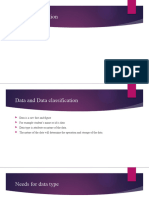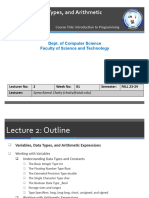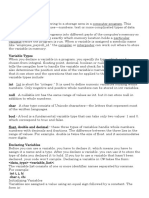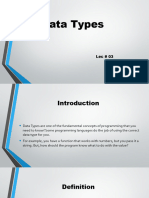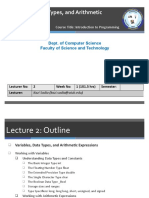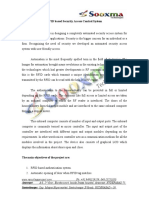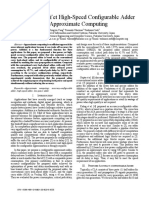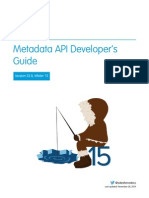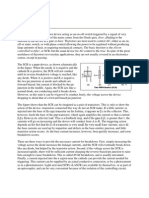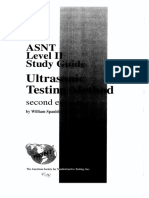0% found this document useful (0 votes)
55 views24 pagesData Types and Operations
The document provides an overview of data types and operations in programming, explaining the distinction between data and programs. It details various data types such as integers, floating points, strings, and logical types, along with examples of their usage. Additionally, it highlights the importance of specifying data types in programming to ensure correct data manipulation and operations.
Uploaded by
btggvgy884Copyright
© © All Rights Reserved
We take content rights seriously. If you suspect this is your content, claim it here.
Available Formats
Download as PPTX, PDF, TXT or read online on Scribd
0% found this document useful (0 votes)
55 views24 pagesData Types and Operations
The document provides an overview of data types and operations in programming, explaining the distinction between data and programs. It details various data types such as integers, floating points, strings, and logical types, along with examples of their usage. Additionally, it highlights the importance of specifying data types in programming to ensure correct data manipulation and operations.
Uploaded by
btggvgy884Copyright
© © All Rights Reserved
We take content rights seriously. If you suspect this is your content, claim it here.
Available Formats
Download as PPTX, PDF, TXT or read online on Scribd
/ 24



